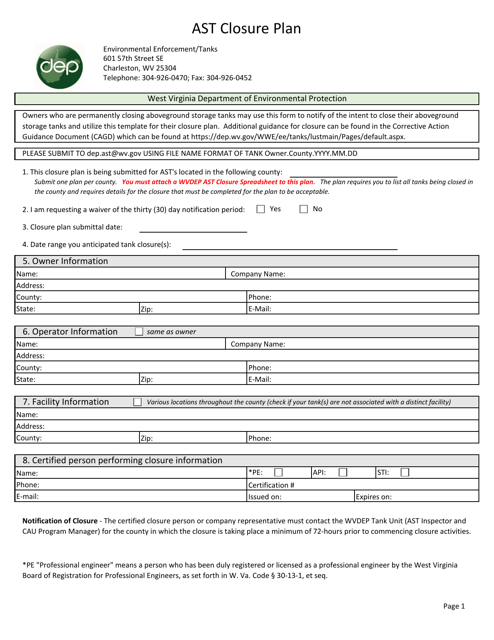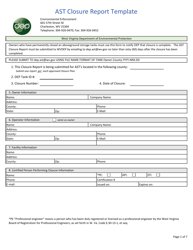Appendix D-6 Ast Closure Plan - West Virginia
What Is Appendix D-6?
This is a legal form that was released by the West Virginia Department of Environmental Protection - a government authority operating within West Virginia. As of today, no separate filing guidelines for the form are provided by the issuing department.
FAQ
Q: What is Appendix D-6 AST Closure Plan?
A: Appendix D-6 AST Closure Plan is a document that outlines the procedures for closing an Aboveground Storage Tank (AST) in West Virginia.
Q: What is an Aboveground Storage Tank (AST)?
A: An Aboveground Storage Tank (AST) is a tank used to store petroleum products and other hazardous substances above the ground.
Q: Why is a closure plan needed for ASTs?
A: A closure plan is needed to ensure that ASTs are properly decommissioned and removed from service to prevent any environmental contamination or safety hazards.
Q: What does the Appendix D-6 AST Closure Plan include?
A: The Appendix D-6 AST Closure Plan includes procedures for tank cleaning, removal, and disposal, as well as site restoration and documentation requirements.
Q: Who is responsible for implementing the AST Closure Plan?
A: The owner or operator of the AST is responsible for implementing the closure plan in accordance with the regulatory requirements of West Virginia.
Q: What are the regulatory requirements for AST closure in West Virginia?
A: The regulatory requirements for AST closure in West Virginia include obtaining necessary permits, conducting proper tank cleaning and removal, and submitting closure documentation to the appropriate regulatory agencies.
Q: Are there any financial requirements for AST closure in West Virginia?
A: Yes, the owner or operator of the AST is required to provide financial assurance, such as a closure bond or insurance, to cover the costs of tank closure and site restoration.
Form Details:
- The latest edition provided by the West Virginia Department of Environmental Protection;
- Easy to use and ready to print;
- Quick to customize;
- Compatible with most PDF-viewing applications;
- Fill out the form in our online filing application.
Download a fillable version of Appendix D-6 by clicking the link below or browse more documents and templates provided by the West Virginia Department of Environmental Protection.











